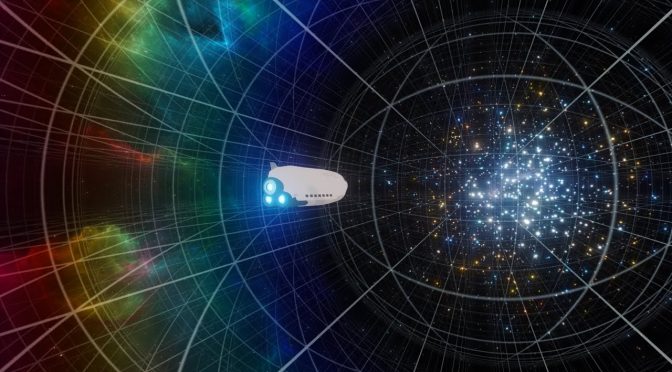Ever wondered what it would be like to travel at the speed of light? Embark on a fascinating journey through space, as we delve into optical effects, special relativity, and general relativity in this captivating article, inspired by the YouTube video “What would we see at the speed of light?” by ScienceClic English.
Einstein’s Time Relativity: Time Dilation and Length Contraction
Albert Einstein’s theory of special relativity introduces the concepts of time dilation and length contraction. As we approach the speed of light, time appears to slow down for us relative to an observer on Earth (time dilation), while the length of objects in the direction of motion appears to contract (length contraction). As our spaceship gains speed, we would observe strange phenomena like the Terrell-Penrose rotation and the Doppler effect, creating a truly unique cosmic experience.
Bending Space-Time: Warp Drives and Science Fiction
Although it is impossible to travel faster than light, general relativity suggests that space-time can bend, allowing for a potential “warp drive” mechanism. This science-fiction inspired concept envisions propelling a bubble of space-time faster than light, with a spaceship remaining stationary inside. Despite the intriguing idea, creating a warp drive requires negative mass, which is currently thought to be nonexistent in our universe. Nonetheless, the mathematics of this hypothetical situation offers a fascinating glimpse into the mysterious world of faster-than-light travel.
The Rain Analogy: Understanding Aberration of Light
The author provides an insightful analogy to help grasp the concept of aberration of light, an optical effect that occurs when our spaceship accelerates. Imagine driving a car in the rain, where the raindrops fall vertically. As the car moves forward, the raindrops seem to hit the windshield head-on, giving the impression that the rain comes from the front. Similarly, as our spaceship gains speed, the light from stars seems to come increasingly from the front, making them appear to move away, even though we are actually getting closer.
Inside the Spaceship: Acceleration and the Unbearable Speed Myth
Contrary to popular belief, high speed doesn’t necessarily lead to unbearable conditions inside a spacecraft. The author clarifies that we cannot feel speed, but only acceleration – the thrust of the spacecraft’s reactors pressing us against our seats. If the acceleration is within reasonable limits, the journey remains comfortable, even when approaching the speed of light. Moreover, the spacecraft is equipped with a force field to repel dangerous objects, such as high-velocity specks of dust that could cause significant damage.
Looking Into the Past: Light Travel and the Doppler Effect
As we venture farther into space, the light from celestial objects takes longer to reach us. When observing a distant star, we see it as it was when the light was emitted, potentially thousands of years ago. The author explains how the Doppler effect comes into play during our journey: Earth’s light takes increasingly longer to reach the spaceship, making Earth’s events appear to unfold in slow motion. Conversely, as we approach distant stars, their light gets brighter and their clocks seem to tick faster due to the blue shift in their color.
The Illusion of Optical Effects: Terrell-Penrose Rotation and Length Contraction
While special relativity introduces genuine physical effects, such as length contraction, it is important to distinguish these from optical illusions. The Terrell-Penrose rotation is an optical illusion that makes objects appear angled or rotated in the direction of motion, rather than actually contracted. Thus, while we might not visually observe length contraction when zooming past a planet, the contracted appearance of the planet is masked by the Terrell-Penrose rotation.
Conclusion
The Enigmatic Universe and the Boundaries of Human Knowledge Our journey through space at the speed of light, inspired by ScienceClic English’s video, unveils a myriad of captivating phenomena, challenging our understanding of reality. As we continue to explore and unravel the mysteries of the universe, we must appreciate the beauty and complexity of both optical effects and relativity theories, reminding ourselves of the limits and possibilities of human knowledge in the vast cosmic landscape.
Credit: Special thanks to the YouTube channel ScienceClic English and Alessandro Roussel for inspiring this article with his captivating video (narrator: Octave Masson) and thorough explanation of the subject matter.

